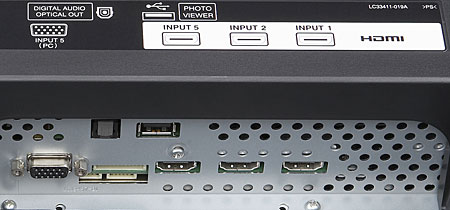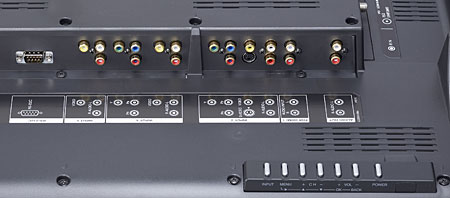JVC LT-47X899 LCD TV Setup & Tests
The 47X899 offers a full set of grayscale calibration controls in the user menu as well as a partial set of CMS (color-management system) controls. The CMS provides controls for red, yellow, green, and cyan, but not blue or magenta, which seems very odd. Also, the control labels are unconventional, making it difficult to know which control does what.
Tom Norton calibrated the grayscale and CMS, so I'll let him tell you about the process:
The grayscale calibration went relatively smoothly, but the CMS wasn't very effective. I took two shots at dialing it in (see Color Accuracy in Measurements). One of them improved the green point very slightly and the secondaries a bit more. The other one reduced the y coordinate of green, but I couldn't change the x coordinate. This second attempt is arguably worse because it cuts off a large slice of the right side of the color gamut, which includes the region that covers flesh tones.

As you can see in the Measurements section, the grayscale and color temperature were pretty close to correct in the Low color-temp setting without a calibration. Also, tweaking the CMS didn't improve the color points all that much. Assuming this is representative of what anyone buying this set can expect, I think it's unnecessary to pay for a professional calibration.
I did notice one problem—the Detail (sharpness) control was unavailable for HDMI sources, which meant I couldn't reduce the ringing (white halos around black lines on a gray background) that was obvious on test patterns. This wasn't particularly evident on real-world material, but the control should be available for all inputs.
Starting with the Spears & Munsil test HD DVD (unpublished) at 1080i via HDMI, the 47X899 picked up 3:2 pulldown immediately in most cases, though it took a couple of seconds after some incoherent edits. It didn't pick up 2:2 pulldown nearly as well, even with Natural Cinema (film mode) off.
Turning to HQV Benchmark on HD DVD at 1080i, the set's Digital VNR (video noise reduction) control reduced noise significantly, but it also softened the picture slightly—I'd rather live with noise. The video resolution-loss test was solid as a rock, and jaggies were invisible. The film resolution–loss test took a full second to lock on, after which the mid and low horizontal bursts continued to flicker. The pan across the bleachers lost a fair amount of detail.

HQV Benchmark on DVD at 480i via component revealed that the finest detail was almost completely rolled off. Jaggies were mild to moderate, and they were fairly pronounced in the waving flag. In this case, Digital VNR was very effective with little further softening of the picture. On the other hand, the MPEG NR control softened the picture to the point of being out of focus. The 47X899 was very slow to pick up 3:2 pulldown with Natural Cinema set to Auto or On, and 2:2 didn't look very good with Natural Cinema set to Auto or Off.
Looking at FPD Benchmark on Blu-ray to evaluate the set's motion detail, the scrolling monoscope had lots of shimmering in the resolution wedges, but the scrolling characters, map, and car license plates were pretty sharp with no artifacts. The video clips looked very good, with just a hint of shimmering. Differentiation within mostly black and mostly white images was reasonably good, especially the mostly white shots.
Finally, I popped in Mission: Impossible III on HD DVD at 1080i and jumped to chapter 8. There was some moiré in the stairs as the camera pans across them, but it wasn't nearly as bad as some I've seen.
Off-axis performance was quite poor, as was uniformity. The center of a full-screen black field was darker than the sides, and that darker region seemed to track with me as I moved off center, which also caused the apparent black level to rise dramatically beyond about 45 degrees. I wouldn't want to watch this set more than about 20 degrees off axis.




























































